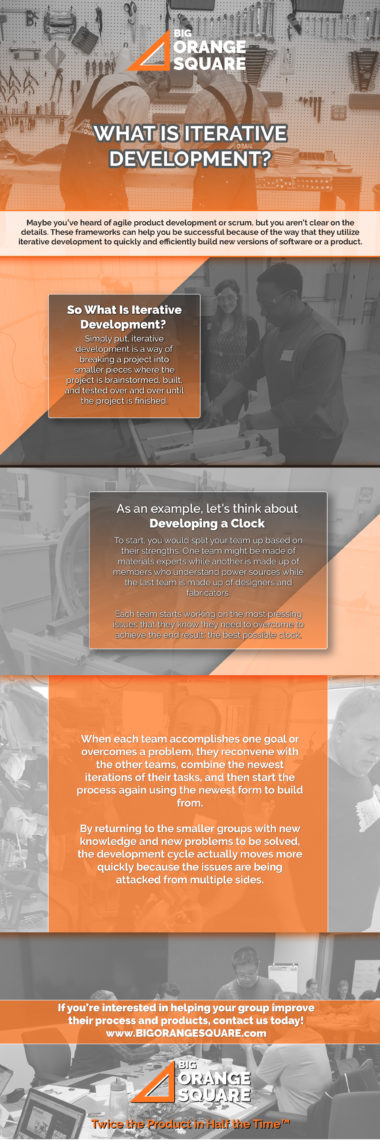What Is Iterative Development?
Maybe you’ve heard of agile product development or scrum, but you aren’t clear on the details. Maybe you’re familiar with agile/scrum in relation to software development but you aren’t sure how it can apply to your manufacturing business. These frameworks can help you be successful because of the way that they utilize iterative development to quickly and efficiently build new versions of software or a product.
At Big Orange Square, we have the experience needed to help your team learn to apply these frameworks and principles to streamline and improve product development. Whether you work in software or in an industry where you are developing physical products, Big Orange Square can push your team to improve their processes. Contact us today to learn more about how we work and read on to learn about the basics of iterative development.
What Is Iterative Development?
Simply put, iterative development is a way of breaking a project into smaller pieces where the project is brainstormed, built, and tested over and over until the project is finished. While this might not seem overly complicated, putting it into action in an efficient manner takes work and practice.
As an example, let’s think about developing a clock.
To start, you would split your team up based on their strengths. One team might be made of materials experts while another is made up of members who understand power sources while the last team is made up of designers and fabricators. Each team starts working on the most pressing issues that they know they need to overcome to achieve the end result: the best possible clock.
When each team accomplishes one goal or overcomes a problem, they reconvene with the other teams, combine the newest iterations of their tasks, and then start the process again using the newest form to build from. By returning to the smaller groups with new knowledge and new problems to be solved, the development cycle actually moves more quickly because the issues are being attacked from multiple sides and anticipated before the product is “finalized.”
Going back to the example of the clock — the materials team might determine that Material A might be the best choice because, while it may be more expensive than Material B, it weighs less and therefore requires less power to operate. This discovery allows the power source team to spend more time working on making its energy source smaller and more affordable, while the design team can use the lighter material to come up with innovative designs.
If you’re interested in helping your group improve their process and products, contact us today. We have decades of experience working with teams who are trying to improve their procedures and products by maximizing every second and every cent. At Big Orange Square, our goal is to help you build Twice the Product in Half the Time™. We accomplish this goal by teaching your team to think differently and to be able to pivot and change according to the newest and most important data available. Get in touch with us today to see how we can assist your team.









